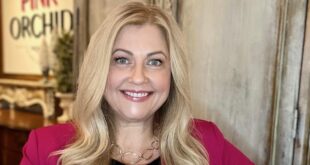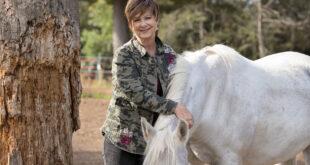By Katie McKy
For Ann Brand, the founder of Ann Brand Mindfulness, mindfulness is academic, personal, and professional. Brand earned a doctorate in psychology from the University of North Carolina-Chapel Hill with an emphasis on child development and families. She was studying “experience and expression of emotion” at the National Institute of Mental Health in Bethesda, MD. There, she plumbed the research that shows “mindfulness supports attention and memory, emotion regulation, stress reduction, and positive relationships among other things.”
That’s when it became personal, for Brand was “suffering from grief after her mother’s death.”
“The experience of grief after the death of my mother shocked and overwhelmed me,” Brand said. “I tried to avoid and repress it. Turns out, when you try not to feel one emotion, you have difficulty feeling all emotions. I felt numb and flat.”
Through Brand’s research on emotion and work in education, she had known about the practice of mindfulness for many years.
“I didn’t think it would work for me as a busy, Type A, list-making person,” she said.
However, grief prodded Brand to try what appeared to be a poor fit for her personality.
“When you are suffering, you are willing to try anything, even something you don’t understand,” Brand said. “I got a book on mindfulness and taught myself how to meditate using books, podcasts, and guided practices.”
Her internal tide turned.
“With mindfulness practice, I slowly cultivated the tools to allow my grief to be experienced and not be overwhelmed,” Brand said. “Getting curious about my experience of the breath, body, emotions, and thoughts in a kind and curious manner supported me in growing the capacity to be with all experience — pleasant and unpleasant.”
When grief arises now in Brand, “it is a familiar feeling.”
“I can allow the myriad of emotions (sadness, fear, love, gratitude, etc.) to move through and be experienced with care. Being with the grief of missing my mother is an ongoing experience that has softened around the edges with time and practice,” Brand said. “Mindfulness supports me in allowing my experience of grief without judgment and expectation.”
Mindfulness was such a difference maker for her, Brand turned it into her profession. Today, Brand remembers and shares her initial doubt with her students when they, too, are uncertain of mindfulness’s possible efficacy.
“When people express hesitancy to try it, I share my own experience of skepticism and then encourage them to give it a try and see what they notice,” she said. “We can only learn about the practice of mindfulness by trying it. Even a brief five-minute mindfulness of the breath practice can give us insight into how the practice looks and feels.”
When Brand teaches, she often references the research around mindfulness, which shows causation between the behavioral practice and positively changing the structure of a brain. Beyond disseminating the research, what exactly happens in one of Brand’s sessions?
“It’s a mix of teaching, discussion, and practice. The best way to learn about mindfulness is to practice it,” she said. “I teach many different mindfulness tools such as mindfulness of the breath, body, and sounds.”
In the sessions, the group practices both focused attention and open awareness, getting familiar with the habits and distractions of their minds while “meeting each moment with curiosity and kindness.” Students share what they’ve learned in living their mindful lives.
“There is always an opportunity for people to share their experience with the practice and ask questions,” Brand said. “We learn a lot from each other about how to integrate mindfulness practice into our lives.”
Brand describes mindfulness as a way of paying attention to our present moment experience with curiosity and kindness.
“We use the full range of our human experience to grow the capacity to be present. This includes our breath, body, senses, emotions, and thoughts,” she said. “We use formal meditation practices to begin to train ourselves to notice when we are engaged in our direct experience and when our attention is lost in a story about what is happening.”
Brand believes that reacting to life through the filter of our stories often leads to difficulty, as we are not seeing clearly what is happening.
“Mindfulness helps us to grow this capacity for clear seeing so we can respond skillfully, even when things are challenging,” Brand said. “This supports us in caring for ourselves and others while living life in line with what really matters to us.”
Mindfulness has its roots in teachings of the Buddha, but Brand maintains that its use is open to people of all faiths.
“Mindfulness is a practice that uses our experience as a human to engage with the present moment. My training is in teaching secular mindfulness,” Brand said. “It is available to everyone and supports human flourishing.”
In addition to the sessions open to all, which can be booked at Brand’s website (www.annbrandmindfulness.com/classes), she works with business and healthcare organizations, has introduced the practice of mindfulness to students, teachers, administrators, and educational leaders in both K-12 and higher education, and has integrated mindfulness into teacher education at UW-Stout to support teachers in being more healthy, present, effective educators.
Those teachers report “enhanced teaching and listening skills” and being able to better manage stress. This is because mindfulness centers us in the present.
“Mindfulness practice helps us gain clarity into when we are present and when we are lost in stories that get us stuck in the past or future,” Brand explained. “It is only from the present moment that we can figure out how to meet what is happening in the most skillful and compassionate way.”
Being in the present increases the efficacy of teachers.
“When teachers are present, they have greater capacity to respond with all the skills, knowledge, talents, and compassion they possess to support the growth and development of students and their families.”
Uncertainty and anxiety are also reduced in teachers.
“When a teacher notices uncertainty, anxiety, or frustration arising in themselves in a classroom context, they can respond in a way that helps them manage their emotions and support relationships with students,” Brand said. “The ability of a teacher to be aware of their own emotions, self-regulate, and be present supports students in doing the same thing.”
The same positive differences occur in our personal relationships, too, and mindfulness works across all demographics and personalities.
“Mindfulness practice is a human practice, available to anyone,” Brand said. “It doesn’t matter if you are a calm, contemplative person, or a busy, active person. We all have the capacity to pay attention to our present moment experience. Mindfulness isn’t about being slow or calm, it is about being aware. Still, calm, and relaxation are nice side effects!”
There are other sweet side effects.
“We have more moments of contentment and joy in our lives than we notice,” Brand said. “Mindfulness practice helps us train our attention to notice the joy in our lives and then choose to stay with that joy, savor it, and make it a part of us. Whether it is a beautiful sunset, a moving experience of live music, or a meaningful conversation with a loved one, we see it, feel it, absorb it, and remember it more clearly when we meet it with mindful awareness.”
You just have to stick with it.
“Integrating a daily meditation practice was a challenge for me,” Brand said, “but with relaxed persistence it is possible for anyone.”
 Chippewa Valley 5ive for Women The Chippewa Valley’s Premier Magazine for Women!
Chippewa Valley 5ive for Women The Chippewa Valley’s Premier Magazine for Women!









